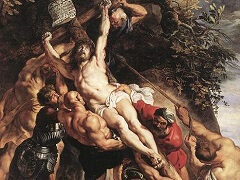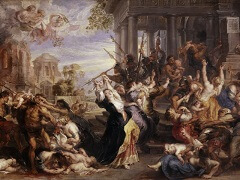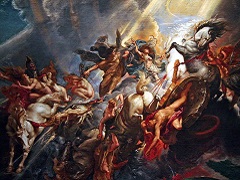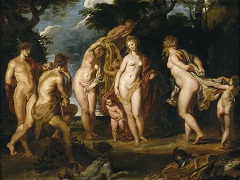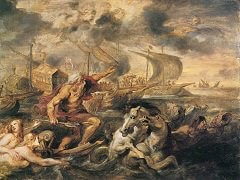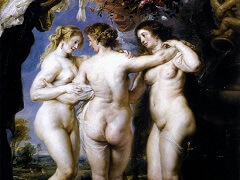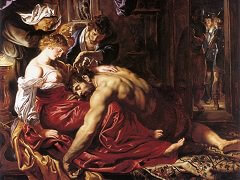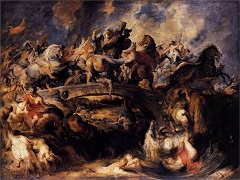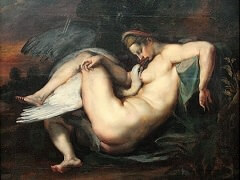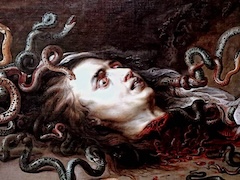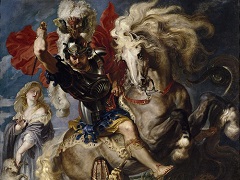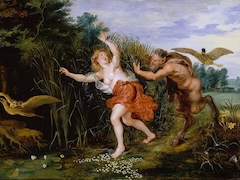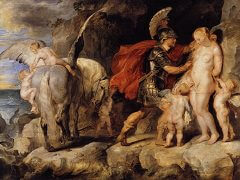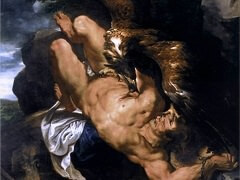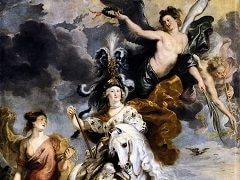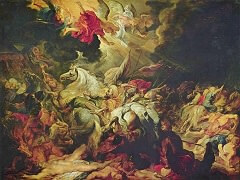Peace and War, 1629 by Peter Paul Rubens
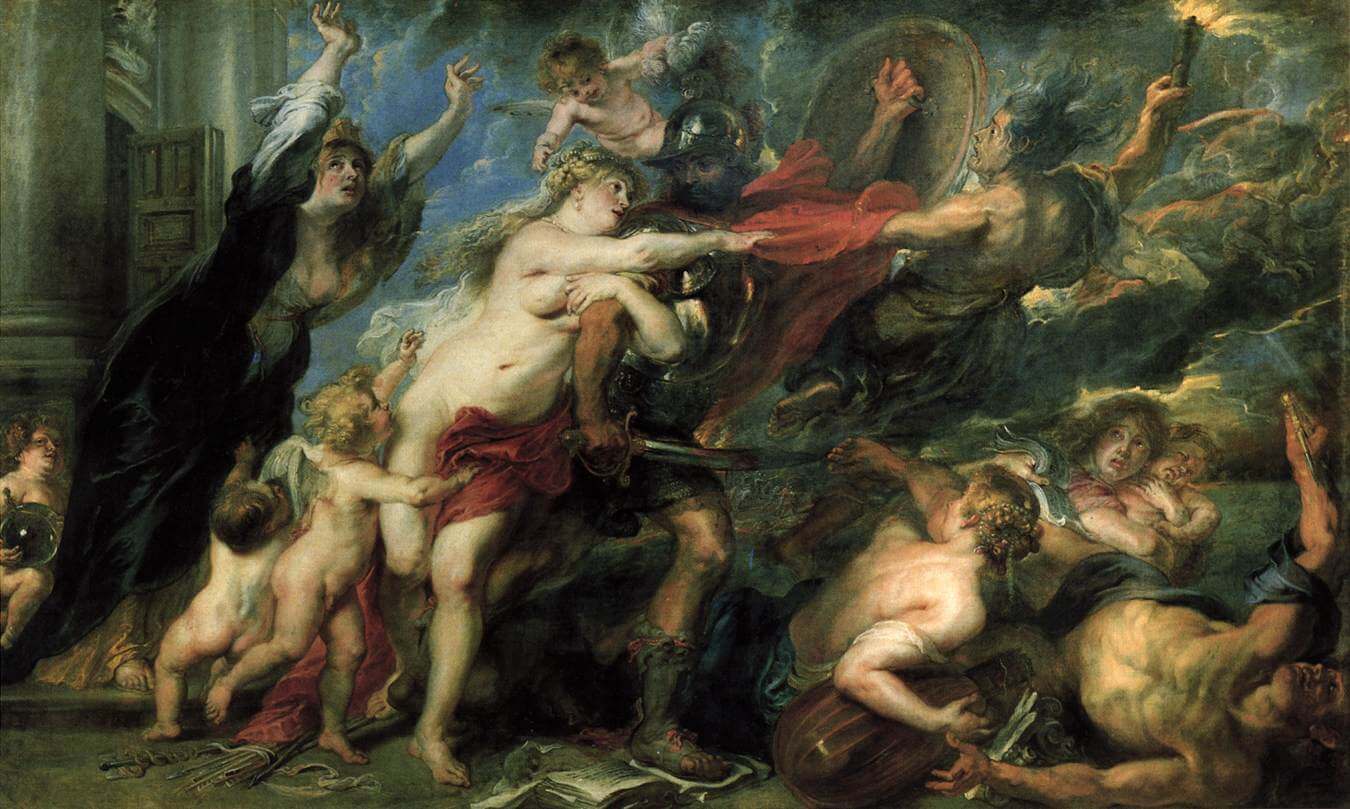
In Peace and War, the principle figure is Mars, who has left the temple of Janus open (which according to Roman custom remained closed in time of peace) and struts with his shield and his bloodstained sword, threatening all peoples with disaster; he pays little attention to Venus, his lady, who, surrounded by her little love-gods, tries in vain to hold him back with caresses and embraces.
On the opposite side, Mars is pulled forward by the Fury Alecto with a torch in her hand. There are also monsters signifying plague and famine, the inseparable companions of war. Thrown to the ground is a woman with a broken lute, as a symbol that harmony cannot exist beside the discord of war; likewise a mother with a child in her arms indicates that fertility, procreation, and tenderness are opposed by war, which breaks into and destroys everything.
There is furthermore an architect fallen backwards, with his tools in his hands, to express the idea that what is built in peace for the benefit and ornament of cities is laid in ruin and razed by the forces of arms. Viewers will also find on the ground, beneath the feet of Mars, a book and a drawing on paper, to indicate that he tramples on literature and other refinements.... The sorrowing woman ... clothed in black with a tom veil, and deprived of all her jewels and ornaments is unhappy Europe which for so many years has suffered pillage, degradation, and misery affecting all of us so deeply that it is useless to say more about them.

